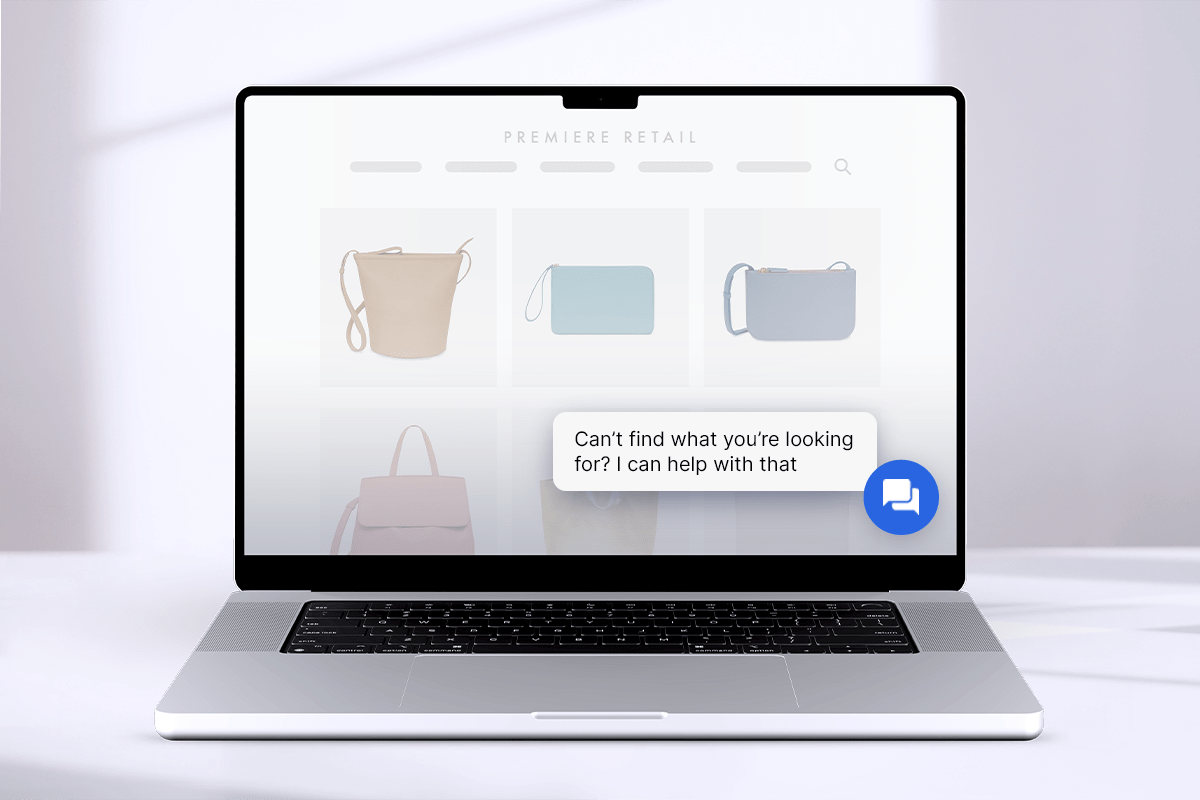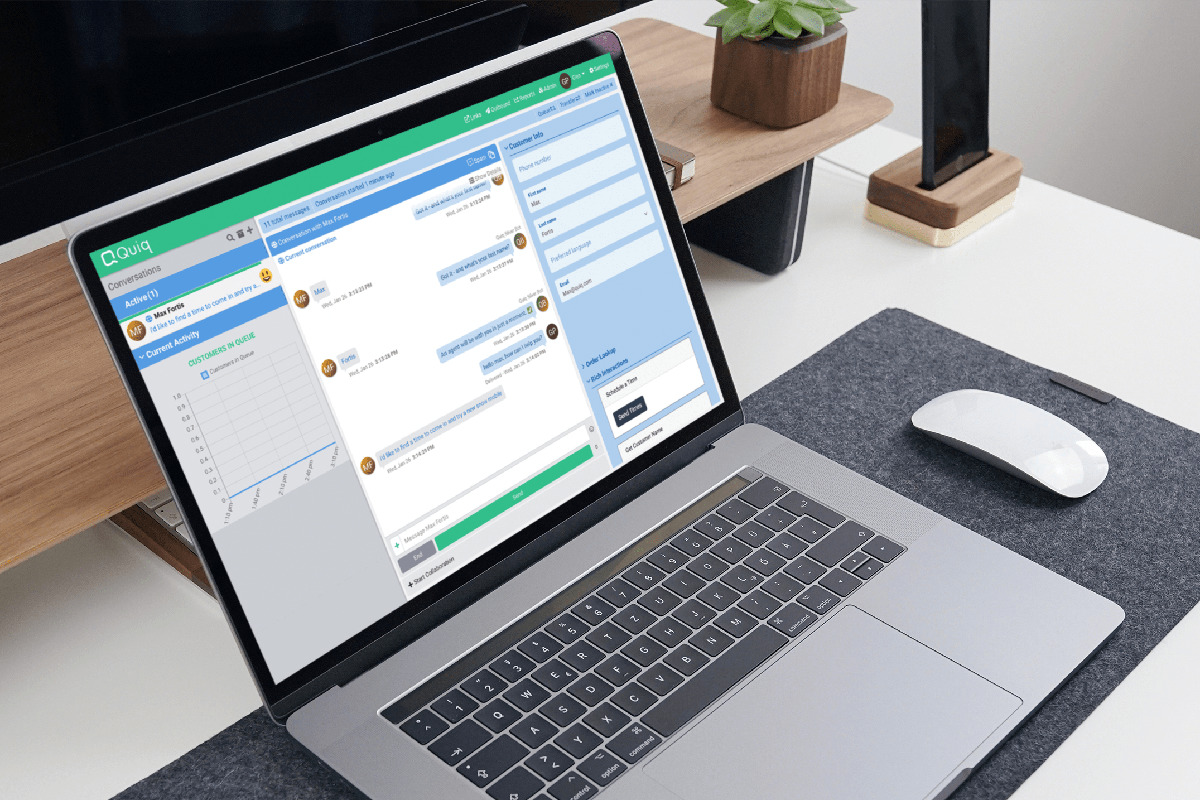It began with corporate businesses. Small chat boxes started appearing in the lower right corner of their websites with friendly phrases like “Welcome!” and “What can we do to help?”
Implementing live chat used to be costly and time-consuming—something only large organizations had the capacity to handle. Now, it’s much more accessible to businesses of all sizes.
As more and more businesses adopt live chat (also known as web chat), it’s become an integral part of customer communication strategies, and customers expect easy one-to-one service from nearly every business they interact with.
In 2020, 42% of US online adults said that it was important for retailers to offer live online chat on their websites, up from 27% in 2019, according to Forrester Research. And that number is only growing.
But if you’re asking yourself, “Is live chat right for my website,” we’ve put together some questions to help you decide.
Which platforms do my customers prefer?
Let’s start with determining if live chat is the best way to reach your customers.
Live chat is a great opportunity for fast, efficient one-to-one communication, but it may not be right for everyone. Ask yourself these questions to help identify if live chat is the way to go.
How old are my customers?
Live chat users typically fall along generational lines. In 2020, 20% of surveyed Millennials and Gen Zers used web chat for the first time, according to Zendesk. At the same time, 14% of Gen Xers and only 10% of Baby Boomers/Silents did.
While live chat has the potential to serve customers of all generations, yours might be more comfortable with traditional methods like voice and email.
How tech-savvy are my customers?
Do your customers need help finding your website? Determine if choosing live chat make sense for the amount of traffic you have, and how your customers typically connect with your business.
Do our competitors offer live chat?
Why is live chat necessary for your business? Because your customers expect it. Especially if you’re competitors have beat you to the punch.
Live chat can be a competitive advantage for your business—which means it can be a disadvantage if your competitors have it when you don’t. Take a look at the competition to their live chat experience, and determine if not having it is hurting your business.
If your competitors haven’t jumped on the live chat train, consider what it would mean to be an early adopter.
Which customer touchpoints will benefit from live chat?
Before you throw a chatbox up on your website, consider how you can use it to strategically serve your customers. There are three distinct points in the customer journey where live chat can make a difference.
What kind of support will we offer prospects?
We’d say this is probably the most frequently thought of use case for live chat. It’s your standard pop-up that welcomes you to a website and asks if you have any questions upfront.
For prospects, you’re serving them in the early stages of their engagement (answering basic FAQs, helping them navigate the website, etc.). However, there’s also ample opportunity to influence purchasing decisions. Think about how you typically engage with prospects early on and how that can translate into live chat.
What kind of support will we offer during purchase?
Immediately before and during purchases is where live chat has the most direct impact on revenue. Being available for quick questions on the product page, pricing page, and even at checkout can help a buyer make the decision to buy.
Plus, customers recognize the value. According to Forrester, 44% of online consumers say that having questions answered by a live agent while in the middle of an online purchase is one of the most important features a website can offer.
What kind of support will we offer post-purchase?
Post-purchase customer service is often rife with simple, repetitive questions (like “Where’s my order” and “What’s the return policy?”) that can bog down your call center. Using live chat to answer these questions quickly and efficiently—or even with a chatbot—improves customer satisfaction while relieving the pressure on your call center agents.
What types of questions do customers ask the most?
You probably have a good idea of the questions you field from customers the most. Some questions and information are easily handled by customer service agents using live chat, while others may need another method of communication. Here are two questions to think about.
Are customer questions simple or complex?
Live chat is great for answering simple questions, but it can be tough to work out more complex problems over messaging. Take a look at how long it takes for your customer service agents to resolve issues and your first-rate resolution numbers. Live chat isn’t the best choice if it takes a long time to solve customer questions and often requires multiple interactions.
However, simple questions, troubleshooting, and problems that can be solved on the first contact are great opportunities for live chat to shine.
Do they contain sensitive information?
While live chat platforms are often equipped with superior security features, some customers may be more reluctant to share sensitive information over messaging. If that’s the case, find other ways live chat can serve your customers.
How will we staff live chat?
Staffing live chat isn’t like staffing your call center. While it’s possible to operate your live chat during business hours, many online customers expect 24/7 service. But there are ways to serve customers off hours without stretching your team too thin.
Ask these additional questions:
Can we hire staff dedicated to live chat support?
Before you implement live chat, determine if you’ll be hiring staff specifically for live chat or if you’ll be reallocating call center agents to work it. While there are many transferable skills, asking agents to do both calls and messaging can be overwhelming without the right training.
Will we offer 24/7 support?
One of the benefits of online shopping is 24/7 availability. Customers aren’t limited to traditional shopping hours. But this also means they’ll need support throughout all hours of the day. Unless you have a high volume of customer questions, it’s unlikely you’ll need to staff live chat around the clock. But you can do things like staggered shifts and AI support to help customers across a wider range of hours.
At the very least, program your live chat platform to offer an away message with the expected response time and other resources that might help.
Will we use chatbots?
Chatbots are a great way to serve customers at all hours of the day (they never sleep). But they can also answer simple questions, collect information, disperse surveys, and more. Determine early if you plan on using chatbots to support your live chat efforts.
What training will we provide staff for live chat?
If live chat is your first foray into business messaging—besides email—then it’s important to train your customer service agents accordingly. It’s not as simple as translating phone skills to messaging. You’ll need to provide your customer service agents with guidelines specific to live chat.
For example:
- How do you greet customers?
- Are emojis acceptable?
- What kind of language is appropriate? (e.g., can you use casual language like “Hey” or “What’s up?” or is it more formal?)
- Can agents use shorthand terms like BRB, TTYL, etc?
- How will you solve conflicts over messaging?
Where should we implement live chat?
You absolutely can put live chat on every page, but should you? Too many popups can easily anger your customers. So while having a welcome message on your home page may seem like a solid strategy, take some time to figure out if it’s right for you. If you already have a privacy popup, newsletter signup, and maybe a special sale drop-down, it’s probably best to skip the live chat welcome message.
There are other pages you definitely shouldn’t ignore, like your:
- Contact page
- Service or sales pages
- Shopping cart or pricing page
Take a look at your website traffic to see which pages make the most sense. Start with the basics, and work your way through pages with high bounce rates, lower conversions, etc.
How will you measure success?
Don’t go in blind. Take a look at your live chat goals and collect live chat metrics to ensure you’re meeting those goals.
Is customer service your top priority? Make sure you measure:
- Response times
- Average resolution time
- Customer satisfaction
Are you looking to lower your call volume and improve efficiency? Don’t forget to track:
- Ticket volume
- Conversations per agent
- Containment rate
Find the right mix of metrics to measure your goals and help you improve live chat as you and your team become more familiar with the medium.
Bonus: Questions to ask live chat software providers
If you’re ready to implement live chat, you’ll need to find a conversational platform to support it. Selecting the right platform for your business can be tough—there are millions of features to choose from, and it can quickly be overwhelming.
- Start with these basic questions:
- What live chat features do you offer?
- Can I customize the chatbot solution?
- What integrations are available?
- What analytics can I track?
- What’s your uptime?
- How much does it cost?
Live chat is right for your business.
If you provide any kind of online sales (and even if you don’t), live chat is an asset to your business. You’ll be able to engage with your customers at key points in the customer journey and offer the support they’ve come to expect.
Take the time to answer these questions thoroughly, and you’ll be ready to take the next step.



